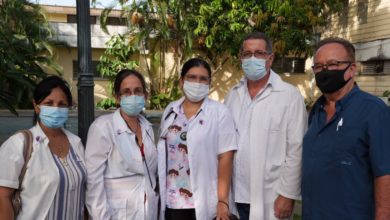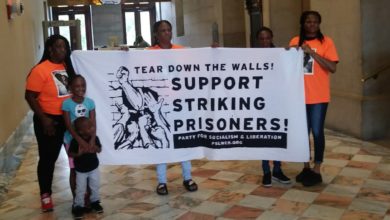The United States officially passed the grim milestone of 400,000 COVID-19 deaths today — by far the most of any country in the world. At the time of this writing, there have been a total of 24 million cases of COVID-19 identified in the country, with over a million new confirmed infections each week. Death rates have been climbing during winter months — more than a 300 percent increase since the beginning of November.
This intensification of the crisis comes despite the ongoing rollout of the vaccine. The Trump administration has come under severe criticism for the slow speed at which vaccines have been administered. The lack of centralization and coordination between the federal government and the states has confounded the rollout and the pandemic response as a whole. Millions of doses of the vaccine are sitting idly in warehouses across the country. The CDC admitted earlier this month that in Florida less than a quarter of the coronavirus vaccines have been administered.
Hospitals and healthcare centers that are on the frontlines of the pandemic are near the brink of collapse. Texas, California and Arizona are some of the states reaching maximum capacity in their hospitals. PPE is again in short supply and ventilators are a scarce commodity.
One lesson that is becoming obvious as the pandemic worsens is that organized labor fares better than unorganized labor in the dire straits of a pandemic. One study found that unionized New York nursing homes had statistically significant lower mortality rates from COVID-19 than non-union facilities. Securing PPE is a life or death matter for healthcare and other frontline workers, but there are national shortages due to the government’s refusal to compel private businesses to produce it in sufficient quantities. To date, over 3,000 healthcare workers have lost their lives due to the pandemic. All of this suffering and death was easily preventable.
As the public health aspect of the crisis worsens, so does the economic fallout. Many states have begun lockdown measures again. This has led to a spike in unemployment and just like last year there has been little assistance provided that would allow workers to stay safe at home while meeting their basic needs.
More than 40 million people are at risk for eviction because of the pandemic. The eviction crisis that is looming is set to intensify at the end of this month as the CDC eviction moratorium expires. Without a guaranteed income and a nationwide cancellation of rents, many working families teeter on the edge of losing everything.
The government of the United States has had nearly a year to coordinate and refine its pandemic response to meet the needs of the people. The few, paltry measures that have been enacted have come too little, too late.
Comparing the U.S. virus response and outcomes to that of other countries, most of which have far less wealth and resources, illustrates the extent of this failure. In China, where COVID-19 was first identified, there have been a total of 4,634 deaths, compared to 400,000 in the United States. Vietnam, a country of almost 100 million people, has seen only 1,520 cases and 35 deaths. But instead of taking proactive measures, the U.S. government at all levels has abandoned the working class, and by their negligence, caused the country’s worst mass casualty event since World War Two.





